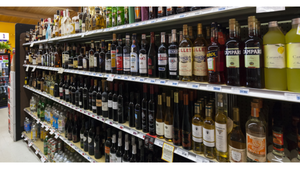A seasonless selection of produce
January 1, 2018
By bringing together growing regions around the world, the produce industry is able to offer shoppers a wide range of fruits and vegetables—even those out of season.
Last year Chile felt the wrath of Mother Nature. The country’s growing regions were hit with abnormally cold temperatures during the peak of their growing season in what the local industry called “the worst freeze in 80 years.” Add to that, in January the country’s ports underwent an on-and-off strike limiting the departure and arrival of shipments.
While the news was reported in U.S. media, it is likely consumers did not recognize the impact these happenings would have on their daily lives. That is, until they kicked off their New Year’s diet and went shopping for blueberries and stone fruit in the dead of winter.
Chile grows and exports a tremendous amount of fresh fruit. In the 2012-2013 season, the nation exported more than 2.6 million tons. Of that, more than 860,000 tons came to the U.S.
The freeze resulted in an 11.4% decrease in exports, resulting in what the Chilean Fresh Fruit Association (CFFA) estimates to be $540 million of lost income to the Chilean economy.
Specifically, exports to the U.S. fell 12.5% in volume; the most significant decrease was in the stone fruit categories (51%). “Lower volumes and higher prices presented significant challenges in working with retailers on promotions,” says Karen Brux, managing director for the San Carlos, Calif.-based CFFA. “Looking at the entire stone fruit category, for example, the volumes weren’t strong enough or consistent enough to implement any promotions in 2014.”
That is a big hit for retailers, not to mention, a culinary disappointment for shoppers who have become accustomed to having year-round availability of their favorite items in their refrigerators.
Observers say that consumers still “shop the season.” When the fall hits, everyone is looking for pumpkins and squash; come summer, watermelon and berries are flying off the shelves. Yet, having these products year-round is an expectation that the industry strives hard to meet.
Having off-season fruits and vegetables available is a key driver for the produce department, more so than offering organic or local options, say observers. Those, they add, are perks and additional profit drivers, but just having the right fruit or vegetable when the consumer wants it always wins the sale.
For most commodities, organizations have to work across multiple growing regions throughout the year. A few regions, however, can provide a year-round supply of product. Mexico’s avocado business is one of them.
Avocados from Mexico (AFM), the Dallas-based marketing organization for the commodity offers its customers year-round availability; this also means retailers get the same in promotional support.
The demand for avocados has skyrocketed in recent years. U.S. retailers handled approximately 1.8-billion pounds of avocados, says Maggie Bezart, vice president of trade and promotion for AFM, which provides more than 70% of the U.S. market’s supply. In 2015, she says, that number should reach more than 2 billion pounds.
Despite the growth, organization officials are up against the same obstacles that plague other categories—lack of education. “The biggest barrier facing avocados is a lack of understanding in versatility. There are still some people that believe they are fattening, as they have not yet learned about the difference between saturated and unsaturated fats,” says Bezart.
AFM targets this through its educational and display elements at store level, as well as through the organization’s registered dietician who assists in the development of information for stores’ health and nutrition centers, in-house RD’s and websites. “She will be communicating directly with the retail health professionals to drive consumer knowledge on the benefits of adding avocados to a healthy lifestyle and simple ways to utilize avocados in everyday meals and snacks,” adds Bezart.
Such custom educational marketing programs can be the key that unlocks a spot on the shelf. With the international market at retailers’ fingertips, many growers are pulling out all the stops in order to get some face time with consumers.
“Other fresh fruits” is what Brux identifies as the biggest challenge for CFFA. With hundreds of items competing for space in the produce department, she says it is necessary to have “customized, tailored, relevant marketing programs that will capture the attention of produce buyers and merchandisers and generate big, beautiful displays of Chilean fruit.”
Created to do just that, the marketing association works with retailers at the retail level including in-store contests, sales materials, communications through retail social media channels and produce manager incentive programs.
Last year CFFA ran The Great Grape Giveaway promotion, asking produce managers to build a display of Chilean grapes using its point-of-sale materials. Retailers who sent in a photo received an American Express gift card.
“Retailers loved it,” says Brux. “A total of 298 stores from 17 retail chains across the U.S. participated in the promotion. I think we had such strong support because it was fun and easy to enter, and it was a nice incentive for produce managers.”
The promotion came during last season’s slump when table grape exports to the U.S. were down by 19%. But despite the jump in pricing, Brux says the volume was still high enough to run the program, especially since grapes are such a key item in the department.
Overseas sweetness
While location is a selling point for some organizations, other growers import under their own brand, blurring the fine print about growing region. The sweet onion category, for example, offers year-round programs despite the limited Vidalia growing season. To do so successfully, it boils down to quality, not location, say observers.
“There is no sensitivity to imported sweet onions according to research, with taste and quality as the two most important features consumers look for in a sweet onion,” says John Shuman, president and director of sales for Shuman Produce, based in Reidsville, Ga. “With a Peruvian sweet onion program, we’re able to maintain a consistent supply, flavor and appearance at retail to minimize confusion in the category and deliver a high quality product all year long. Global sourcing is a concept that U.S. consumers have come to understand.”
The commodity has grown in popularity in recent years, making up roughly 30% of total sales in the onion category, notes Shuman. The shift has been driven by health benefits, taste and expanding usage beyond Thanksgiving’s marshmallow-topped casserole to a year-round staple.
Grilling, for example, has become a common cooking method in the warm months. Marketers like Shuman suggest presenting these ideas in-store to consumers. “The fall presents a great opportunity to merchandise sweet onions as a part of grilling-themed displays featuring favorite items served at tailgates,” he says. “Consider displays outside of produce to maximize sales during the summer and fall months when grilling is top of mind for consumers. Sweet onions make the perfect pairing for burgers, sausage and chicken on the grill, and research shows that merchandising these items together increases sales of both products.”
Shuman has been complementing its Vidalia growing season with a Peruvian import program for more than 15 years. Peru offers outstanding growing conditions for sweet onions—more conducive than Georgia, say some growers.
The desert growing regions get little-to-no rain allowing growers to control the water supply through drip irrigation. This is what Bland Farms does. The Glennville, Ga.-based sweet onion grower actually owns land in three different growing regions of Peru and manages the entire growing process, which mimics that of the Georgia crop—same variety, same growing conditions, same fertilizers, same sulfur content in the water, says Delbert Bland, the company’s founder/owner. “That’s the biggest thing we talk about, that Peru is our land.”
The long travel time from farm to store—anywhere from two to four weeks—makes the quality of the onion all the more important, notes Bland, which is the case with all imported product. “It is an extremely high-quality onion; so much so that it can make it all the way through winter if kept in the right condition,” he says.
Made in Italy
When opportunity knocks, import kiwis.
That is just what happened for Viva Tierra, the Sedro-Woolley, Wash.-based organic tree fruit grower and importer. When company officials connected with an organic Italian kiwi grower, they jumped on the opportunity to branch out and help grow their customers’ produce departments. It turns out, they note, it is just what retailers were looking for.
“Kiwis used to be really exotic and now they are pretty regularly available,” says Addie Pobst, organic integrity and logistics lead. “They are seasonal still; there isn’t year-round availability like we have for something like apples, but there seems to be an uptick in demand so we are meeting that with a greater supply.”
After four shipments last winter to test the waters, the company began receiving kiwis in late September through February. “We are seeing a high demand for the product; right now there is a bit of an opening in the market,” says Pobst.
The kiwis will carry the Viva Tierra brand with Green Kiwis available in a 9-kilo box and Golden Kiwis in a smaller size to balance out the higher price point. Also in the works is a 1-pound retail bag that will feature recipes, slicing directions and usage and storage information. Pobst says the branding is in line with the company’s other product lines helping to highlight the continuity of the brand in-store.
“There is more to us than just apples and pears,” says Pobst, adding that they will be watching the market to mitigate any risks. “Because it is new to us, we don’t know the ups and downs of the supply like we do in the apple segment so we will be watching the market closely to learn when the other supply regions are in play.
Crossing Lines
Despite having a blossoming sweet onion business spanning two continents, Bland Farms is sweetening its offering. This year the Glennville, Ga.-based grower began growing sweet potatoes in Georgia to market alongside its sweet onions.
The message the brand is trying to send is “eat smart and eat sweet at the same time,” says Delbert Bland, founder and owner. “We believe the sweet potato category has a lot of growth ahead of it. Both are extremely healthy for you, so it is a win-win for both items.”
To capitalize on cross-merchandising opportunities, the company has created a split bin that stocks both sweets and features recipes using both as ingredients. The design for the bin allows retailers to handle both items without taking up additional floor space.
The company wants to open the door for retailers looking for a one-stop shop. “Say a Midwest retailer normally receives a load onions once every other week; now we can deliver a weekly load of half sweet onions and half sweet potatoes to bring them fresher product more often,” says Bland. “Everything we do here in Vidalia coincides with sweet potatoes. Our storage and harvesting equipment, our operation, our people, etc. There are a lot of synergies across the board.”
About the Author
You May Also Like




